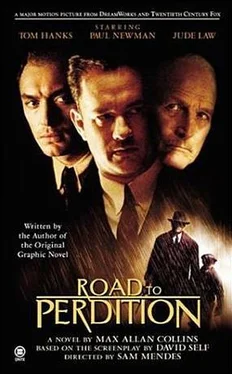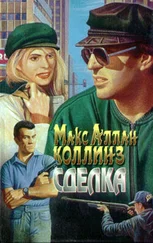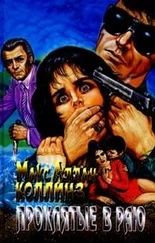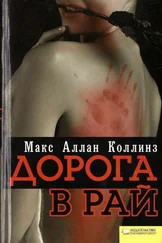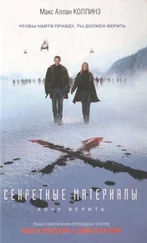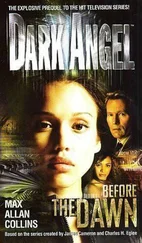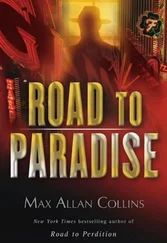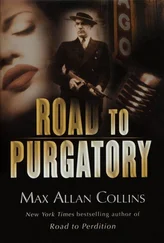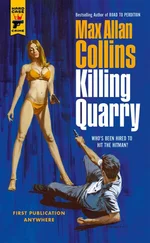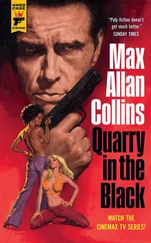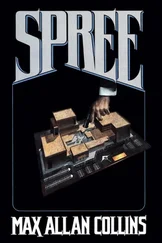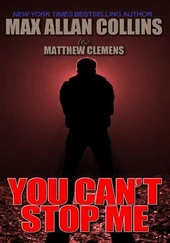Down the corridor he found the service stairs and made his way to the lobby, where he blended into the throng of the thankfully busy hotel. Though he sensed no pursuit, he knew he could no longer trust Nitti — honor, loyalty, trust, all of those were old ideas, now.
But a new idea was forming. So this was all business, was it? Right now, the Capone crowd considered the Looney alliance a valuable asset. O’Sullivan aimed to change that view — he would hurt Frank Nitti, he would make the man bleed... not red, but green.
When O’Sullivan had left the room, Frank Nitti slipped through a doorway into a small side room, where two men had been tucked away, a mock grillwork vent enabling them to hear every word.
One of those men, a king in an easy chair, was John Looney, wearing a wrinkled, slightly shabby suit; more snappily dressed, in a chair at his left, sat his son Connor, anxious but sober.
Nitti approached Looney. “You heard?”
Looney nodded. To his son, he said, “Go upstairs. I can’t stand the sight of you.”
Connor sat forward, urgent but rational. “Pa, listen to me. O’Sullivan’s in the hotel right now — you can end this. Mr. Nitti has more guns in this place than the Rock Island arsenal. We’ve got to take him now.”
The old man shook his head. “In a busy hotel, with the resultant melee?... Connor — go upstairs.”
Nitti almost smiled; how ridiculous it was, this grown man being sent to his room by his father! By all accounts, Connor was a fairly deadly character; he had been described to Nitti in varying ways, all unflattering: homicidal, unstable, volatile...
Yet the man wilted under his father’s stare, and finally walked out.
And when his son was gone, Looney slumped in the chair, his head in his hands. “God help me. God help me... Christ, Frank, what do I do?”
Nitti took the chair Connor had vacated. “John... try to cast emotion aside. Think objectively. Suppose this O’Sullivan was just another soldier... Not someone you took a shine to, just some bird who got out of line.”
But the old man only muttered, “God help me... God help me... ”
“You know the answer, John.”
Looney looked at Nitti with teary, rheumy eyes. “Make it quick, then. Has to be quick. Merciful.”
Nitti nodded. “Done... and the kid?”
Dismay exaggerated the old man’s features. “Oh, not the boy! Oh, Christ, no, no... I’ve already lost the wee one... ”
Nitti had about had it up to here, from both O’Sullivan and Looney, with this operatic crap. “Right, fine, sure, and then one day, he’s not a kid anymore, he’s a man. You think Michael O’Sullivan, Jr., won’t remember what your family did to his family?”
Looney considered that, then shook his head, violently. “Not the boy, Frank. Not the boy.”
“I understand,” Nitti said, already mulling over who to get for an assignment this important, this hazardous. Someone who had done jobs for the Outfit before, someone freelance but trustworthy, someone worthy of the Angel of Death, someone truly gifted...
Nitti smiled to himself; he knew just the man.
The true-crime writers call him “the Reporter.” But that seems to be a latter-day appellation: no one has turned up any period reference, either in newspapers or the “true-detective” magazines of the day. This is probably because the public didn’t become aware of Harlen Maguire until his death, after which the press — and later, researchers — put the facts together .
Maguire was a yellow journalist, and what was called a “picture chaser.” He worked for Hearst papers in several big cities, Milwaukee and Chicago among them, and when a photo was too gruesome even for the tabloid press, he would peddle it to the even more exploitational newsstand crime magazines .
The gangland beat was his specialty — mob rubouts, in particular, though a good sex scandal or a celebrity autopsy also attracted his particular talent. His stature among the rags he worked for was based on his ability to show up at a grisly crime scene within moments of the carnage going down. He prowled the streets, with a mini-photo lab in his trunk. Some say he inspired the famed New York photographer WeeGee, who took Maguire’s approach to truly artistic heights. Others say he was merely a ghoul with a camera .
Since no interviews with Maguire exist — and few who knew him, in his daily life, were aware of his dark, private existence — authors have been left to speculate, and dime-store psychology has it that Maguire became obsessed with his subject matter. Others wonder if some of the unsolved murders he “lucked” upon had been his own work — drumming up business, so to speak. An entire book has been devoted to Maguire photos and unsolved murders, with analysis of a certain artistic, ironic staging that may indicate the shooter of the photo was also the shooter of the victim .
How Maguire became aligned with the Capone crowd is unknown. One source claims that Capone hired Maguire to dig up the dirt on a ward heeler who was standing in the Outfit’s way; another source says Maguire was tapped to find a racetrack manager who skipped town with a bundle of mob money .
At any rate, Harlen Maguire became one of Al Capone’s most reliable and fearsome assassins, high on a short list that included “Machine Gun” Jack McGurn and Sam “Golf Bag” Hunt. A Chicago reporter who knew both Maguire and numerous Outfit mobsters claimed that Maguire worked directly under Frank Nitti, who reportedly relished the assassin’s research skills and — under the cover of his profession — his access as a legitimate reporter. What else is a researcher but a hunter?
And Harlen “the Reporter” Maguire was the perfect hunter .
The portable camera, with extendible tripod, weighed around forty pounds, but the slender man carrying it — pale, boyishly handsome, but nonetheless thirty years of age — moved quickly along the sidewalk, as if the apparatus he was hauling were feather light.
Harlen Maguire might have been any reporter on the prowl for a good story, but the sharp cut of his suit, the rich fabric of his topcoat, and the snappy bowler said otherwise... though even a decent off-the-rack suit would have stood out in this neighborhood. This was Little Village, after all, a slum-ridden neighborhood on Chicago’s West Side, where Italian blood often ran hot... and sometimes just ran.
Maguire figured the fire-escape entrance to the tenement block would be less crowded, but a small crowd — undissuaded by the bitter winter morning chill — had gathered here, as well. Most of them were out of work, and a juicy neighborhood murder was just the thing to warm the cockles.
Shouldering his way through, Maguire announced himself as press — “Out of the way! Excuse me, ma’am — thank you!” — and within a minute he was upstairs and inside the dingy one-room flat where, over by the kitchen area, police and a coroner’s doc were dealing with a man of average build in work shirt and denims who was slashed here and there, some nasty cuts that the guy didn’t even seem to notice, ranting, raving.
“I took the knife away from the son of a bitch! He was raping my wife... son of a goddamn bitch! Raping my wife... ”
No woman was present, so the cops had already gotten her out of there. And while they were dealing with the killer, Maguire would take a gander at the killee...
His subject was in the bedroom corner of the flat, by a window looking out on the El tracks, a big oaf with his eyes and mouth open, sprawled on the floor with multiple stab wounds in his chest, like a bouquet of flowers: black entry gouges centered blossoms of red. His pants were embarrassingly down, his striped shorts discreetly up. The weapon was on the floor, a small hunting knife with blood smeared almost to the hilt.
Читать дальше
